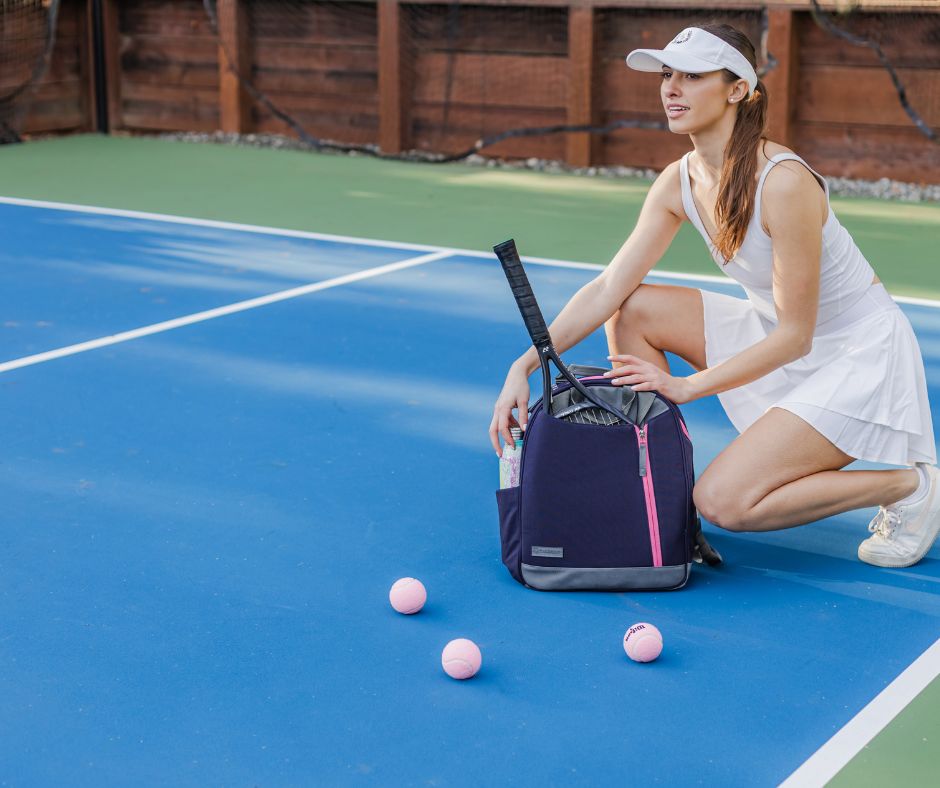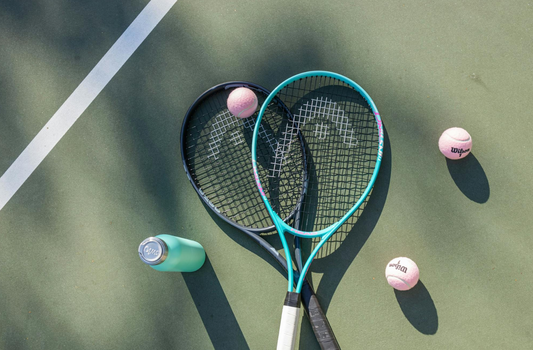
Tennis is a sport that is played all over the world, but depending on where you live, court surfaces may differ. The type of court can have a significant impact on the speed, bounce, and style that is most suitable for the game. In this article, we will take a look at the three main types of tennis court surfaces as well as a few less commonly found surfaces and how each impacts the game.
Grass Courts

Grass courts are the most traditional type of tennis court surface. Tennis, which has been called lawn tennis, rose to prominence when the British aristocracy played tennis on grass lawns hundreds of years ago. A grass court is made of short grass on tightly packed soil, and the high cost of maintaining this type of court has caused it to lose popularity in modern times.
Grass courts are the fastest surface since they keep the bounce low, and the bounces can be unpredictable as balls tend to skid. They tend to favor aggressive players with big serves as well as those who like to play at net, and rallies tend to be short. Powerful, flat shots and slices are more effective on grass than shots with heavy topspin.
While all four Grand Slams were played on grass courts in the past, Wimbledon is the only one that is still played on grass today. Legends like Roger Federer and Pete Sampras excelled on grass due to their powerful serves and volleying skills.
Clay Courts

There are two types of clay courts: red and green. Red clay courts are made of crushed shale, stone, or brick and are most commonly found in Europe and Latin America. The less common green clay courts, also known as Har-Tru, are made of crushed metabasalt topped with green clay. They are found in parts of the US and Canada. Besides differing in color, green clay tends to be more slippery than red clay. Like grass, clay courts also require regular maintenance like watering and rolling.
Due to the textured surface, clay courts are the slowest surface. Balls have a higher bounce on clay, leading to longer rallies that favor physically fit players who like to play defense from the baseline. Clay is also suitable for players who hit with heavy topspin. Clay courts can be easier on the body since the surface absorbs more shock and allows players to slide into shots to conserve some energy, but matches on clay tend to last longer, thus requiring endurance.
Roland Garros, or the French Open, is the only Grand Slam that is played on clay. Rafael Nadal, with 14 French Open titles, is often called the “King of Clay.”
Hard Courts

Hard courts are made of asphalt or concrete with an acrylic top layer that provides a uniform, smooth surface. The speed of hard courts may vary depending on the amount of sand present in the top layer, but they are generally faster than clay courts and slower than grass courts. They are popular because they require low maintenance compared to grass and clay courts.
Since hard courts have smooth surfaces that provide consistent bounces and a moderate pace, they allow for predictable shot-making. Hard courts allow both offensive and defensive players to thrive, and players with a well-balanced, all-around game do well on hard courts.
Both the Australian Open and the US Open are played on hard courts, but they are not the same. The Australian Open’s Greenset surface is rated “medium fast,” while the US Open’s Laykold surface is rated “medium slow.”
Other Surfaces
Artificial Grass
Some facilities have artificial, or synthetic grass to provide the softness and feel of a grass court without the high cost and maintenance required. They contain plastic grass fibers that don’t need to be mowed, and the sand-filled top layer allows it to dry more quickly than real grass.
Carpet
While no longer in use, carpet courts were used on both the ATP and WTA tours until the last decade. They are made up of a textile or polymeric material laid on a flat concrete or sand surface and are often used indoors. They are generally faster than hard courts but slower than grass courts, thus favoring players with aggressive, attacking games.
Conclusion
While you may not have access to different court surfaces, understanding the differences between the surfaces can help you appreciate the nuances of the courts at the Grand Slams and other tournaments around the world. If you ever get a chance to play on different surface types, give it a shot and see if you are more suited for grass because you have a strong serve and aggressive style, clay because you have stamina and a great defensive game, or hard courts because you have a versatile well-rounded game.




